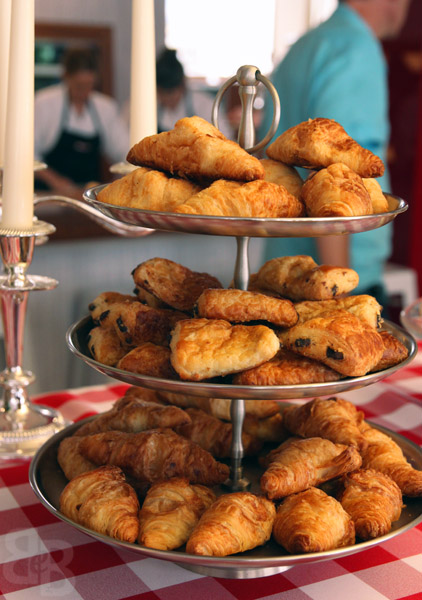I love new toys. Kitchen toys, that is. One of my friends once described me as ‘would choose to buy a fancy kitchen gadget over a designer handbag’ – and I have to admit that she was (and still is) absolutely right.
It was thus unsurprising that I was excited to hear bout the Miele range of combination steam appliances. Whilst I have vaguely heard about steam ovens, I have never properly understood how they work, and why someone would want one. So I decided to go along to the Miele ‘Steam Patisserie’, which hoped to showcase the diversity and adaptability of baking with steam – and also featured a few Rachel Khoo creations, which she created specially for this event. We also got to meet her, which was a definite plus!
So yes. Steam combination ovens.
The ‘steam’ component comes from the humidity setting, which can range from 0-100%. There are 3 ways you can use it:
- Keep the humidity at 0% = conventional oven.
- Switch off the ‘oven’ function and only use the ‘steam’ function = steamer
- Use both the humidity and oven functions = combination steam oven
I was particularly interested in the combination steam mode, as I often bake with a water bath, or throw chilled water into the oven to create steam. We were also told that the oven can also be used to reheat food (a la microwave), but this would take double the time needed in a microwave. The advantage would obviously be the ability to heat more than one plate of food at a time!
Whilst I loved the concept, I felt that the oven was a little small. In an ideal world, I would want to only have one oven. Miele are however already on the case, and are currently developing larger (64L capacity) steam combination oven. The oven is also naturally more costly than the conventional oven.
Most importantly, the treats served at the Steam Patisserie were delicious. It obviously helped that everything was served in beautiful mismatched vintage china (which seems to be the new ‘in’ thing). I must admit that I would love to own such a collection… I doubt R will agree though, bearing in mind my already vast collection of mismatched plates/bowls. Ha.
But going back to the food – my favourite was the brioche bun, which was delightfully light, yet had a nice crust. I naturally had to recreate this at home (in a conventional oven with ‘water throwing’), and I am glad to say it turned out very well indeed. I made a few small substitutions as always, but I have kept the recipe below very similar to the original.
Many thanks to Miele for inviting me along to this event, and to Cesar & Dominic, who took the time to chat and explain their steam combination range to us.
Brioche buns
Makes 12-14 buns
Recipe from Rachel Khoo/Miele Patisserie of Steam
For the buns:
- 240g strong white flour
- 25g castor sugar
- 5g salt
- 2 tsp dried instant yeast
- 70ml milk (I usually use cold milk)
- 2 medium eggs + 1 egg yolk
- 125g unsalted butter, softened + cubed
- 1 tsp dried basil
- 1 tsp dried oregano
- 1 tsp dried thyme
- 30g Parmesan (or any other hard cheese), coarsely grated
- 50g French saucisson (or any other ham), sliced into thin matchsticks
For the glaze:
- 1 egg yolk + 1 tbsp milk
Method:
- Place flour, salt, sugar and yeast in the bowl of your stand mixer (fitted with the dough hook).
- Add the milk and eggs, and mix on low speed for 2 minutes until a very rough dough forms. Increase the speed to medium, and mix for 5 minutes until a smooth dough forms.
- Turn the mixer down to low speed. Gradually add in the cubed butter, and mix until the butter is fully incorporated. You may need to use a dough scraper/spatula to scrape the sides of the bowl, to ensure all the ingredients are well combined.
- Lastly, add in the herbs, grated cheese and saucisson. Mix on low speed for 10-15 seconds, or until they are fully incorporated into the dough.
- Place the dough in a lightly oiled bowl, cover with clingfilm or a teatowel, and leave to rise until doubled in size.
- Preheat the oven to 180’C (fan).
- Portion the dough into 12-14 equal sizes (depending on how large you want your buns!). Shape the portioned dough into smooth rounds, and place on lined baking trays. Remember to space the buns as they will rise/get bigger in the oven. Leave to rise again for 15 minutes.
- Glaze the brioche buns with the egg yolk/milk mixture.
- Bake for 12-15 minutes, or until the buns are golden. You may place/throw
- Leave to cool slightly, then eat!
* I attended the event as a guest of Miele, but all views expressed are my own.























